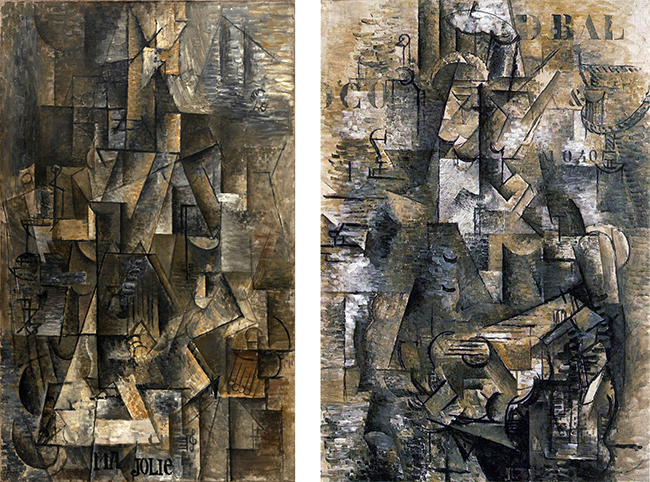| 1911 The Portuguese Georges Braque. 1911 C.E. France. Oil on canvas In this canvas, everything was fractured. The guitar player and the dock was just so many pieces of broken form, almost broken glass. By breaking these objects into smaller elements, Braque was able to overcome the unified singularity of an object and instead transform it into an object of vision. |
| Form: Oil on Canvas |
Function
|
Content:
|
Context:
Cross Cultural Comparison Left: Pablo Picasso, Ma Jolie, 1911–12, oil on canvas, 39 3/8 x 25 3/4 inches (MoMA); Right: Georges Braque, The Portuguese, 1911–12, oil on canvas, 46 x 32 inches (Kunstmuseum, Basel, Switzerland) |

